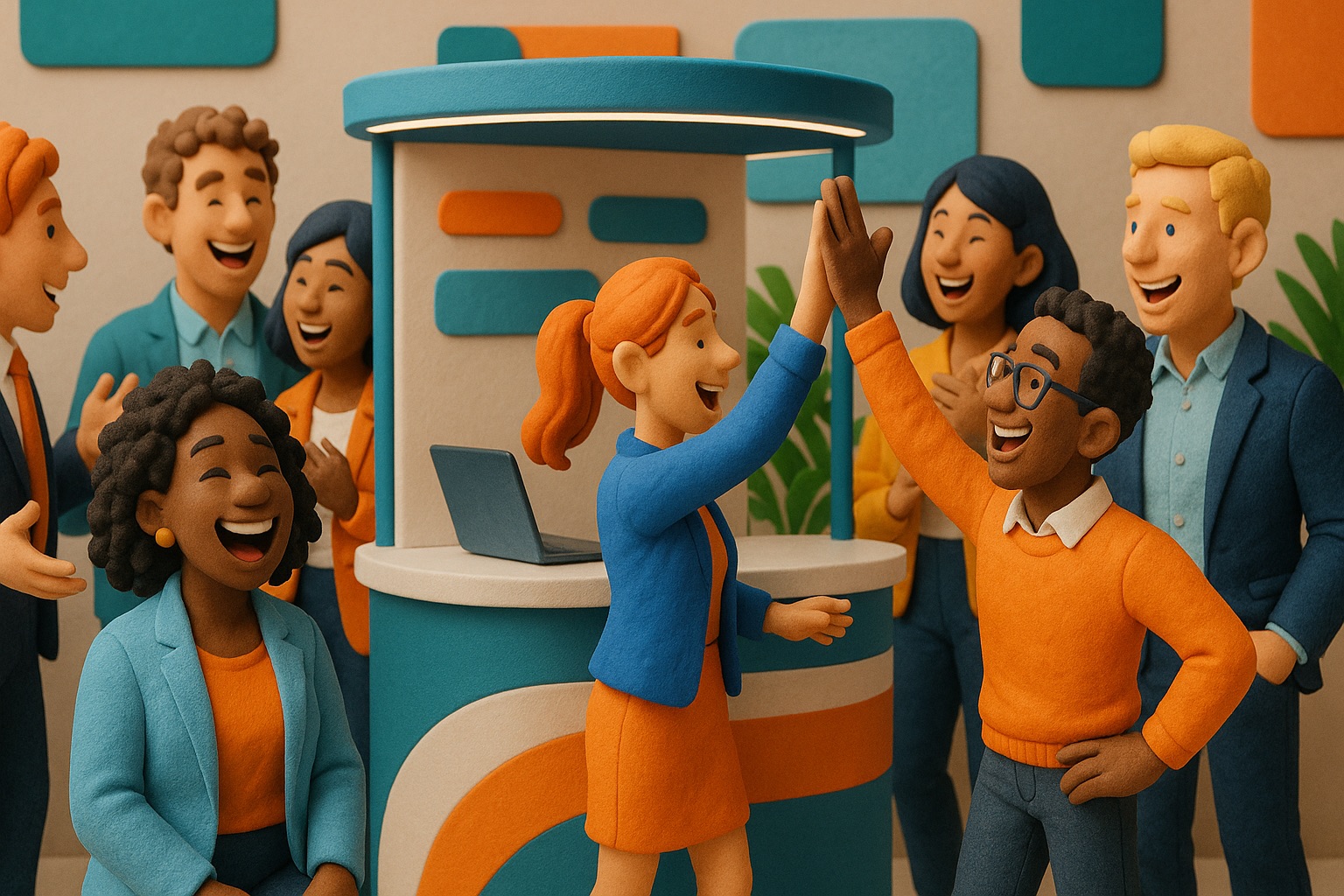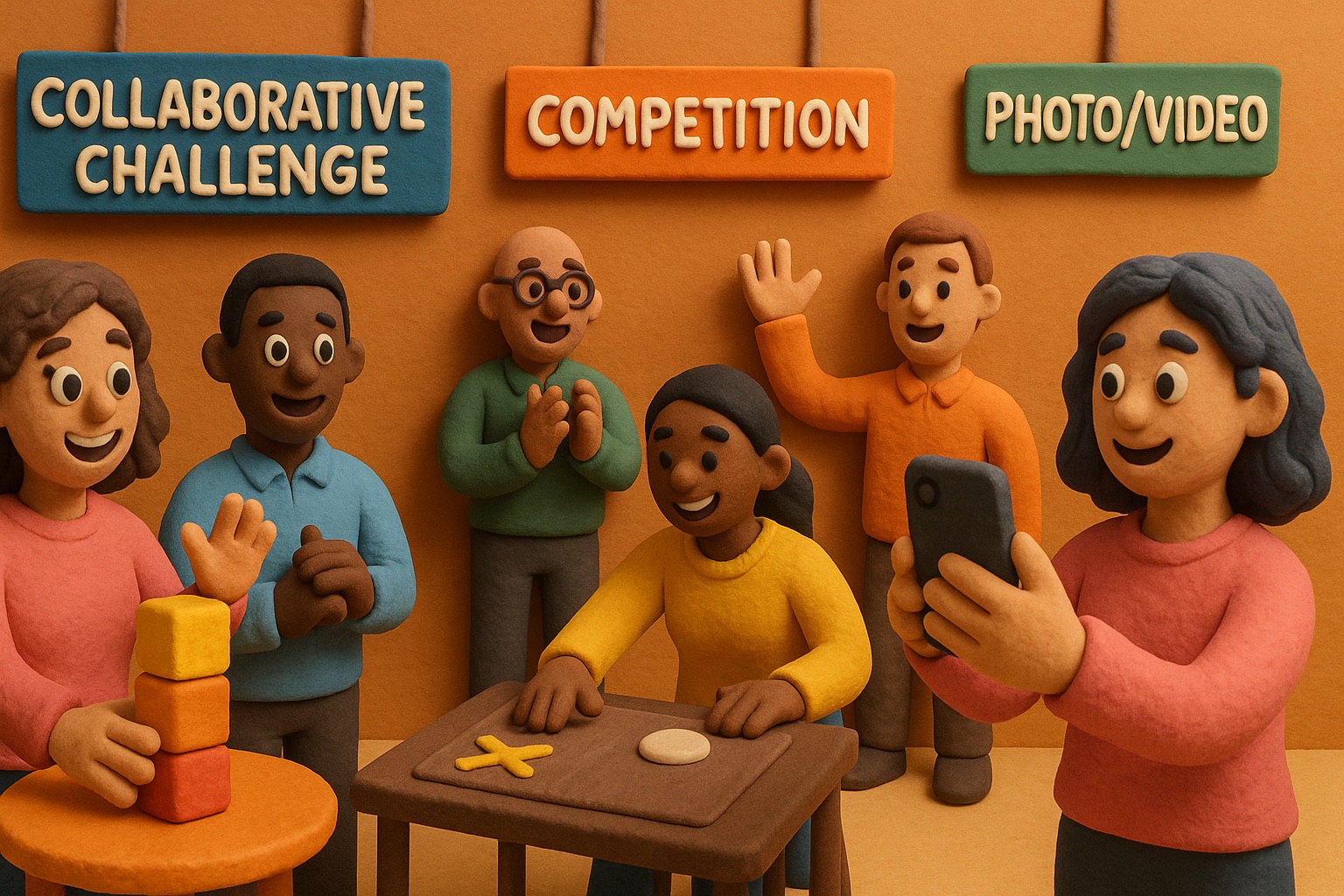Employee engagement events can feel like a box-checking exercise. You book a room, order some food, and hope for the best. But when the event feels forced, it does more harm than good, leaving employees feeling disconnected. A truly great event goes deeper. It’s a chance to build real connection, reinforce your company’s values, and make your team feel seen and appreciated.
The secret is to stop planning activities and start designing experiences. This guide offers a practical framework for creating employee engagement events that actually work. We’ll cover how to design memorable brand moments, choose the right activations for any team, and measure your impact in a way that proves the value of your efforts.
What Makes an Employee Engagement Event Successful?

A successful employee engagement event is built on a clear purpose, not just a fun activity. It’s the difference between a random happy hour and a well-designed experience that leaves people feeling more connected to the company and each other. The goal is to create moments that feel both authentic and intentional, where employees can actively participate rather than just passively attend.
This starts with a foundation of trust. The best events create a space where people feel comfortable being themselves. From there, success depends on a few core principles:
- A Clear "Why": The event should be tied to a specific goal, like celebrating a big win, strengthening cross-team collaboration, or reinforcing company values.
- Employee-Centric Design: Every choice, from the timing to the type of activity, should be made with your team's real-world needs and preferences in mind.
- Active Participation: The experience should invite people to do something, whether it’s solving a puzzle, creating something new, or sharing a story.
For more ideas on engagement activities designed for employees, check out our corporate team activations page.
How Do You Design a Memorable Brand Experience for Employees?
To create memorable branded experiences at company events, you need to make your company’s mission and values tangible. Instead of just talking about your culture, an event lets employees feel it. This means designing activations that tell a story and give everyone a personal connection to the bigger picture.
Think less about putting your logo on everything and more about creating shared moments that reflect your brand’s personality. The goal is to turn abstract values into lived experiences that your team will remember long after the event ends.
- Tell a Story: Frame the event around a core theme. If a company value is "Innovation," you could host a workshop where teams build something together. This makes the value an action, not just a word on a poster.
- Embrace Personalization: Make employees the stars of the show. Activations that incorporate their names, faces, or ideas make the experience feel special and unique to them. Tools like a custom Persona Quiz are perfect for creating unique and personal photo experiences.
- Focus on Shared Creation: Design activities where the team builds something together. This could be a collaborative art project or a problem-solving challenge. The final product becomes a symbol of their collective effort.
For a deeper look at creating these moments, check out our guide on inspiring corporate event entertainment ideas.
What Are Effective Activation Strategies for All Teams?

The best way to activate your brand at corporate gatherings is to choose strategies that are inclusive and engaging for everyone, whether they're in the office, fully remote, or on a hybrid schedule. This means moving beyond one-size-fits-all activities and offering a mix of options that cater to different personalities and work styles. The key is to make participation easy and fun for every single person.
One trade-off with hybrid events is that it takes more planning to make sure remote attendees feel just as included as those in the room. This often means designing digital-first experiences that everyone can join.
- Competitive Fun: Activities like online trivia or team-based escape rooms spark friendly competition and require collaboration. You can use platforms that work for both in-person and virtual teams. For more on this, check out how to use gamification for events.
- Creative Expression: Offer workshops or creative sessions where teams can make something together. This could be a virtual cooking class or a collaborative digital art project. These are great for low-pressure bonding.
- Wellness and Relaxation: Sometimes the best engagement is giving people a chance to recharge. A guided meditation session or a virtual fitness class shows the company cares about employee well-being.
- Interactive Content Capture: Photo and video experiences are a simple way to create a shared, memorable moment. A mobile-first photo experience can also make it easy for both in-person and remote employees to join in, ensuring accessibility on any device.
For more specific inspiration, we’ve put together lists of team building activities for any team and engagement ideas for hybrid teams.
How Can You Increase Participation and Motivation?

To increase participation at employee appreciation events, you have to build genuine excitement and show people that their time is valued. This starts with clear, consistent communication from leadership that explains the "why" behind the event. When an event feels meaningful instead of mandatory, motivation naturally follows.
Getting leaders involved is a huge piece of this puzzle. An invitation from a senior leader or a kick-off message from the CEO signals that the event is a company priority. It makes employees feel that their presence is genuinely important.
- Build Anticipation: Start promoting the event early. Use internal channels to share teasers, behind-the-scenes content, or a countdown to build excitement.
- Ask for Input: Send out a simple poll asking employees what kind of activities they’d enjoy. When people feel they have a say in the planning, they are much more invested in attending.
- Show, Don't Just Tell: Leadership visibility is key. When managers and executives actively participate and show they’re having a good time, it sets a positive tone for the entire team.
- Focus on Recognition: Use the event as an opportunity to celebrate wins and recognize individual and team contributions. Public appreciation is a powerful motivator.
According to research from Gallup, recognition is one of the most effective, yet lowest-cost, ways to boost employee engagement. Making it a central part of your event can have a huge impact.
How Do You Measure the Impact of Your Engagement Events?
Measuring the success of employee engagement events requires a mix of hard data and human feedback. You need to look at both what people did (quantitative metrics) and how they felt (qualitative insights). This balanced approach gives you a complete picture of your event's impact on morale, connection, and even retention.
It’s about moving beyond simple attendance numbers to understand if the event truly made a difference. This helps you prove the value of your efforts and gives you the information you need to make the next event even better.
- Quantitative Metrics (The "What")
- Participation Rate: How many people attended versus how many were invited?
- Pulse Surveys: Send a short survey before and after the event. Ask simple questions to measure shifts in morale or team connection using a 1-5 scale.
- Retention Data: Over the long term, track if teams with higher event participation also have lower turnover rates.
- Qualitative Metrics (The "Why")
- Direct Feedback: Use open-ended survey questions or small focus groups to ask what people enjoyed most and what could be improved.
- Anecdotal Evidence: Pay attention to the stories and conversations that happen during and after the event. Are people still talking about it a week later?
- User-Generated Content: The photos, videos, and comments shared by employees are a direct reflection of their experience. A high volume of positive UGC is a great sign of success.
By focusing on intentional design and clear goals, you can transform your employee engagement events from a budget line item into a powerful tool for building a stronger, more connected culture.
If you want to incorporate a fun photo experience, explore activation concept ideas that might fit your particular team dynamic and goals.










-p-500.webp)



.jpeg)















